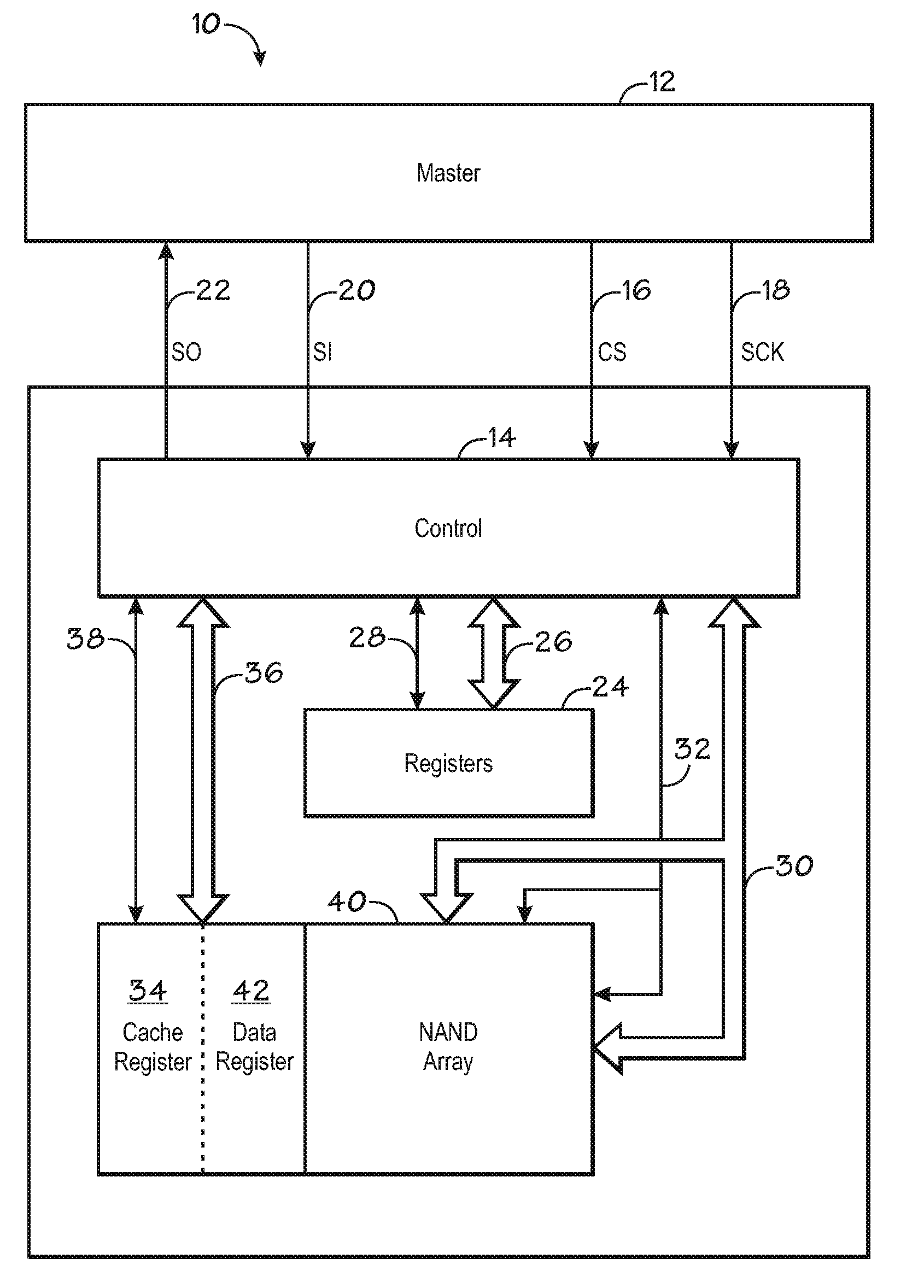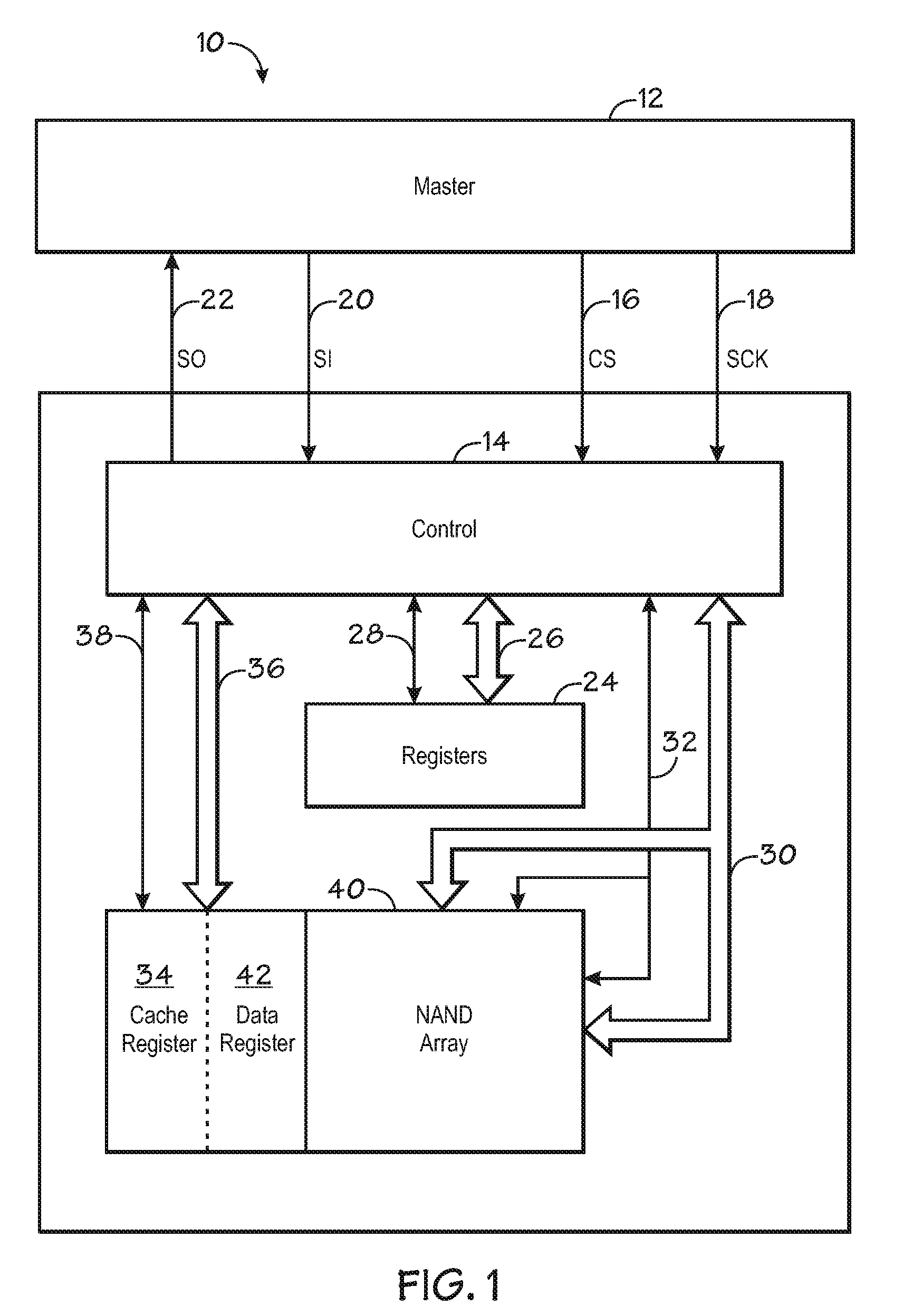System and method for setting access and modification for synchronous serial interface NAND
a technology of synchronous serial interface and access and modification, applied in the field of accessing and modifying settings of nand flash memory devices, can solve the problems of large increase in pin quantity, reduced critical functionality, and reduced quantity of input pins
- Summary
- Abstract
- Description
- Claims
- Application Information
AI Technical Summary
Problems solved by technology
Method used
Image
Examples
Embodiment Construction
[0022]Referring to FIG. 1, an SPI NAND memory device 10 interfaces with a master 12 using a serial peripheral interface (SPI) protocol. Controller 14 includes four interface pins including a chip select (CS) pin to receive a chip select signal CS 16, a clock (SCK) pin to receive a clock signal SCK 18, a slave in (SI) data input pin to receive an input signal SI 20, and a slave out (SO) data output pin to output an output signal SO 22. Data transfer between master 12 and controller 14 takes place serially across input signal SI 20 and output signal SO 22.
[0023]The master 12 may enable the controller 14 by setting chip select signal CS 16 from high to low. After enabling the controller 14, master 12 may send a clock signal SCK 18 and a corresponding data signal SI 20. Each bit transmitted by SI 20 (and SO 22) may be synchronous to either a rising or falling edge of clock signal SCK 18. For illustrative purposes, memory device 10 inputs data on SI 20 latched on a rising clock edge and ...
PUM
 Login to View More
Login to View More Abstract
Description
Claims
Application Information
 Login to View More
Login to View More - R&D
- Intellectual Property
- Life Sciences
- Materials
- Tech Scout
- Unparalleled Data Quality
- Higher Quality Content
- 60% Fewer Hallucinations
Browse by: Latest US Patents, China's latest patents, Technical Efficacy Thesaurus, Application Domain, Technology Topic, Popular Technical Reports.
© 2025 PatSnap. All rights reserved.Legal|Privacy policy|Modern Slavery Act Transparency Statement|Sitemap|About US| Contact US: help@patsnap.com



